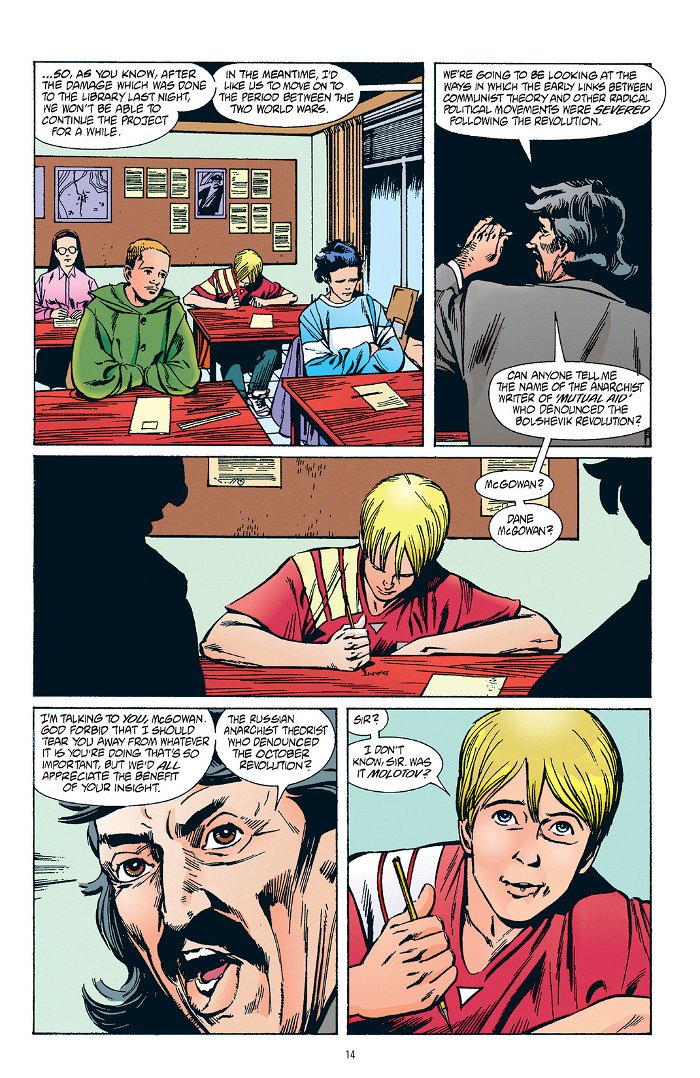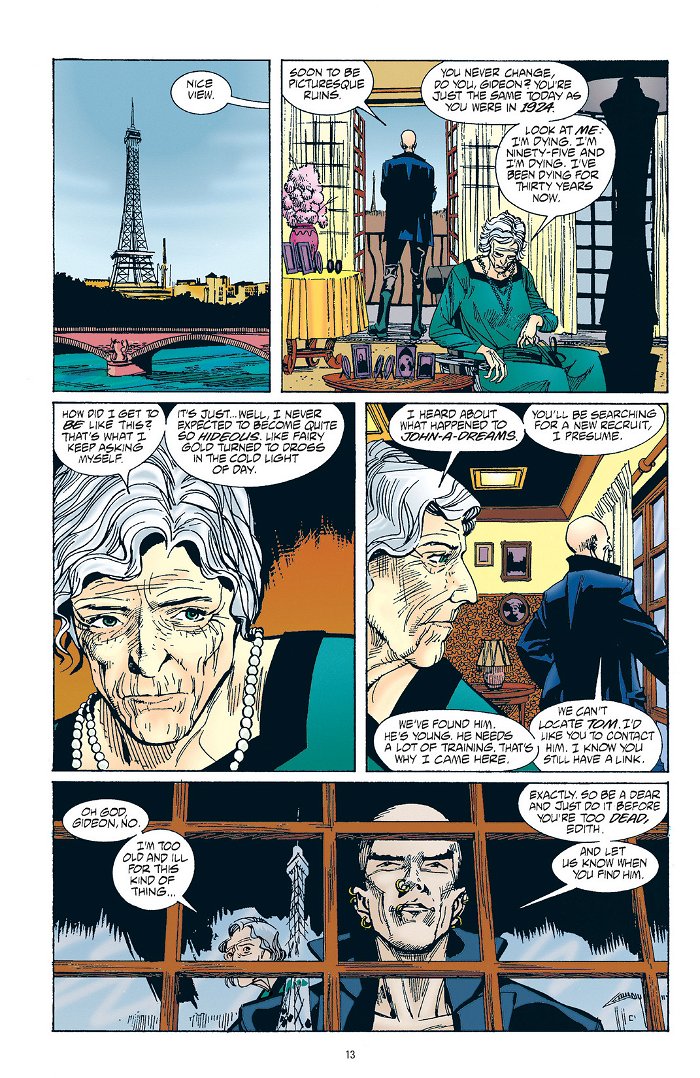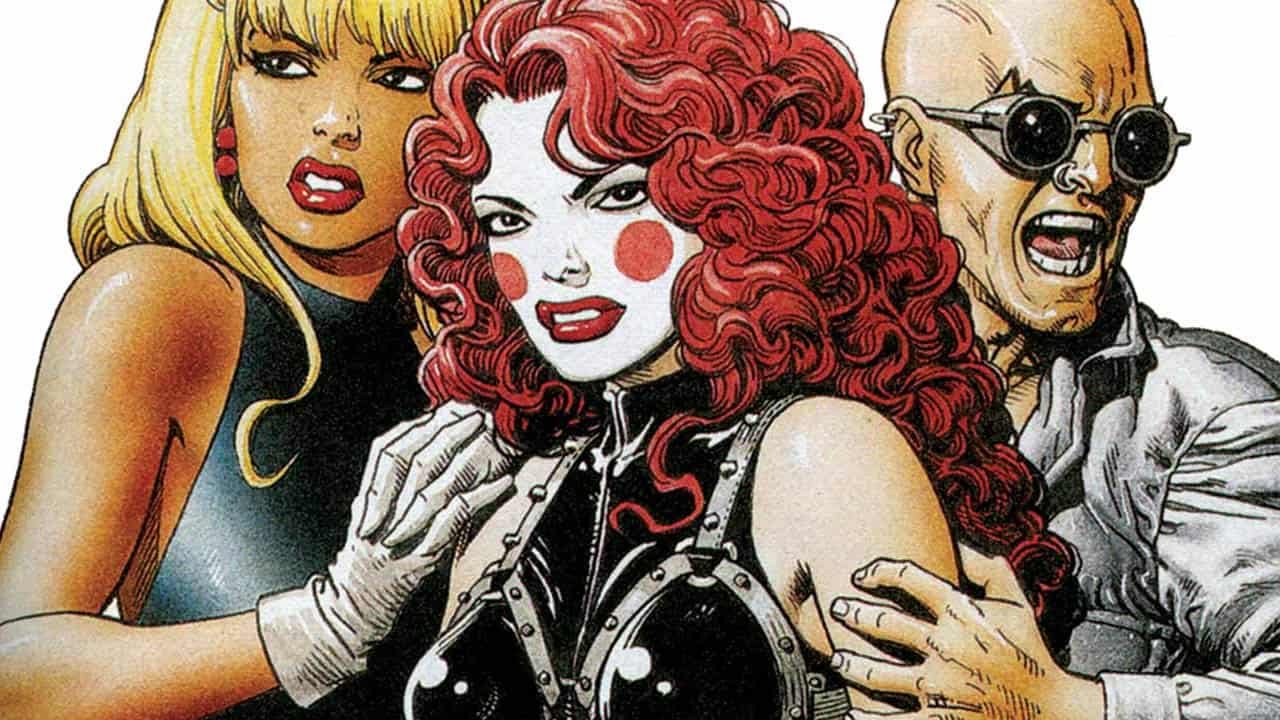As those who have read my articles on his Batman run may have noticed, I’m a wee bit obsessed with Scottish comic book writer and wacko thinker Grant Morrison. Throughout his career, he has deconstructed, revitalized and challenged the definition of superheroes and the comic book form. However, despite my insatiable appetite for all things Grant Morrison, until recently I had yet to sample his magnum opus The Invisibles. The series was published by Vertigo in the 1990s at the peak of Morrison’s headfirst dive into drug culture, transcendental meditation, and every other conceivable act of mind expansion imaginable. Throughout this decade of personal experimentation, Morrison wrote The Invisibles as a sort of fantasy diary for all of his current interests as well as a means to challenge the definition of the mainstream comic book. He also wrote his wild n’ wacky take on the Justice League of America at the same time as a populist contrast to his wild indie title and these days both are considered classics. DC Comics recently decided to republish The Invisibles in a series of glossy n’ gorgeous hardcover deluxe editions. With fevered anticipation and concern about whether or not my brain would survive the experience, I recently devoured the book on behalf of CGM. Even though the series has dated and can be too mind-warpingly complex to swallow, I’m pleased to announce that the series has lived up to the hype. Now, let’s get into the details, shall we?

This 12-issue intro to the wild n’ wacky world of The Invisibles follows the initiation and sudden affiliation of Dane McGowen to the Invisibles and it’s certainly an intriguing, if at times frustrating, starting point to the series. Dane is a juvenile delinquent who despises authority and catches the attention of King Mob and his band of merry misfits known as the Invisibles. In the first arc in the book, we’re gradually informed who the Invisibles are through Dane’s oddball initiation to the group. Essentially, Dane is forced into a juvenile detention centre where he learns that the world is secretly controlled by an alien race living on another plain of existence who control humans through conformity, consumerism, and other 20
century diseases (like I said, it’s heady stuff). Eventually, he busts out of the teen prison and hooks up with an old homeless man who teaches him how to see several planes of reality and detach himself from the world he’s known. Once Dane is psychologically prepared to leave normalcy behind, he’s finally introduced to the titular Invisibles.
The Invisibles are a group of renegade radicals and revolutionaries who have unplugged from the oppressive everyday reality to fight a war against the unseen race that rules and represses humanity. Their leader is King Mob, a bald drug enthusiast and cold-blooded mercenary. His team features a collection of equally strange partners including a tantric-sex loving psychic and a transvestite, but their personalities aren’t deeply explored in this volume (I’m assuming that will be saved for future issues). We primarily spend time with Dane and King Mob. Dane abandons his identity and is renamed Jack Frost. King Mob humiliates and murders a perverted British politician as part of his one-man battle against the world and then leads the Invisibles on a few missions. The first involves a time traveling trip to the French Revolution for a little historical fiction, some lessons in philosophy, and a predictably filthy cameo from the Marquis De Sade. Eventually Jack Frost wants to leave the group because things are getting “too strange” (a pretty hilarious meta-joke to ease reader concerns), we learn a little bit more about the villains, and everything ends on a cliffhanger with the possible death of a pretty central character.
The best way to describe this first volume of The Invisibles is a massive head-trip, and I can’t imagine that Morrison would disagree. Even in this introductory section, it’s clear that The Invisibles is not a book that spoon feeds to readers. It’s challenging, but not in a way that feels like homework. Morrison has managed to fuse pulp action and sci-fi with heady philosophy and explorations in alternative lifestyles. It very much plays as an adventure series filled with puffed up action but is more about challenging reader perceptions of reality and society. It is certainly a dated book in many ways with the fashions and taboo button pushing very much tied to 90s pop culture. However, its message of anti-conformity and abandoning technology and society driven hypnosis in favor of drug and education fueled enlightenment is timeless. Though I often found myself confused and re-reading pages, I was never bored and always rewarded. Morrison has a way of mixing pulp thrills with challenging concepts that has never been more purely explored than it is here.

Another thing that is impossible to ignore while reading this first volume is the vast influence the series had on The Matrix. The concept of 20
century culture as a mass hypnosis by a secret society was stolen directly by the Wachowski siblings and their leather-clad gang of renegades fighting against the stream led by a bald man in sunglasses is more than a little familiar as well. However, I wouldn’t call it plagiarism. The Matrix was always a work of pastiche by the Wachowskis who combined all of their geek obsessions into a single narrative (certainly The Terminator, The Bible, and Kung-Fu movies have as much of an influence on The Matrix as The Invisibles, amongst many other sources). However, it’s an interesting point of comparison. Given that Morrison started his tale 5 years before The Matrix’s release, it shows how ahead of his time the writer was and how dialed in he was to the existential and pop culture obsessions of his era. However, Morrison was also writing in a personal, complex, and challenging style that could never connect with the masses (even the fact that his medium of choice was comics limited the appeal). He was writing for the underground while the Wachowskis’ aimed at the pop audience. That’s the difference and, if anything, the similarities between the two works are more fascinating than frustrating in hindsight.
While this new hardcover edition from DC is absolutely gorgeous to look at with glossy pages, beautiful art reproduction, and a wonderful new cover by Brian Bolland, it has to be said that visuals are not the strength of the series. Morrison’s voice as a writer might be a consistent driving force throughout this book, but the art comes from a variety of sources and in a variety of styles. That’s pretty common way to run a writer-driven comic series (certainly Neil Gaiman worked that technique beautifully through his Sandman run), but in The Invisibles it feels like it was done more as a result of Morrison being unsure of what he wanted visually and experimenting with different collaborators until he found it. Thankfully, this is far from an ugly book. It’s beautifully laid out and told, with some striking imagery. However, this first volume of the series very much feels like a work in progress. I was definitely gripped and fascinated by Grant Morrison’s groundbreaking series throughout this first volume. It’s just clear that this section was as much about Morrison figuring out what The Invisibles could be as it was introducing readers to a strange new world. Still, I’m pleased to say that so far The Invisibles is living up to the hype. It’s not every day that you read an action packed story that makes you re-evaluate our polluted society and question commonly held beliefs. Somehow, that’s exactly what The Invisibles accomplishes. This story is shaping up to be a mix of guttural thrills an Avant-garde art. I can’t wait to see where Morrison shoves my gooey brain from here. I hope I can even survive the next volume.





